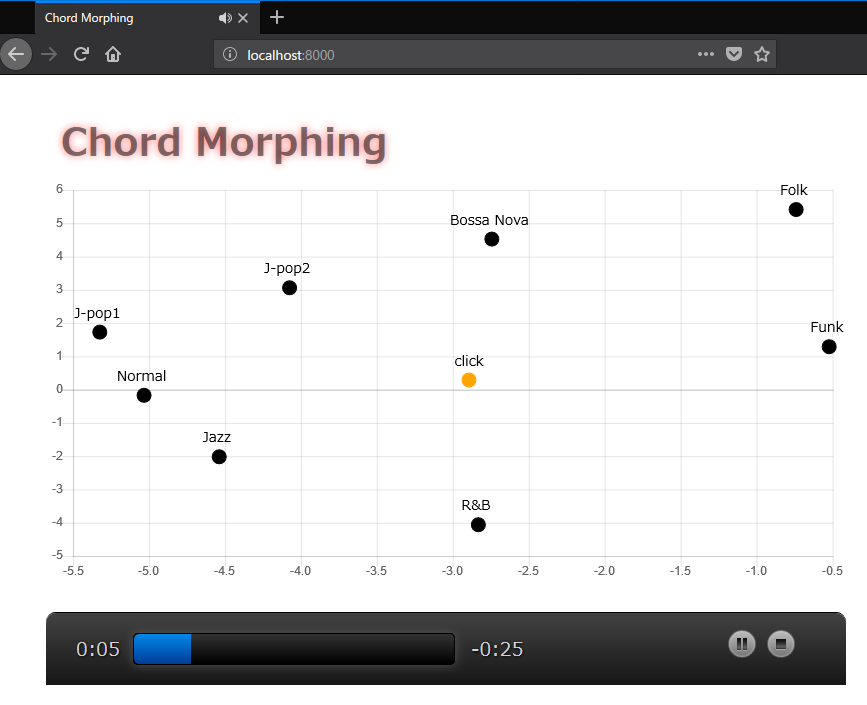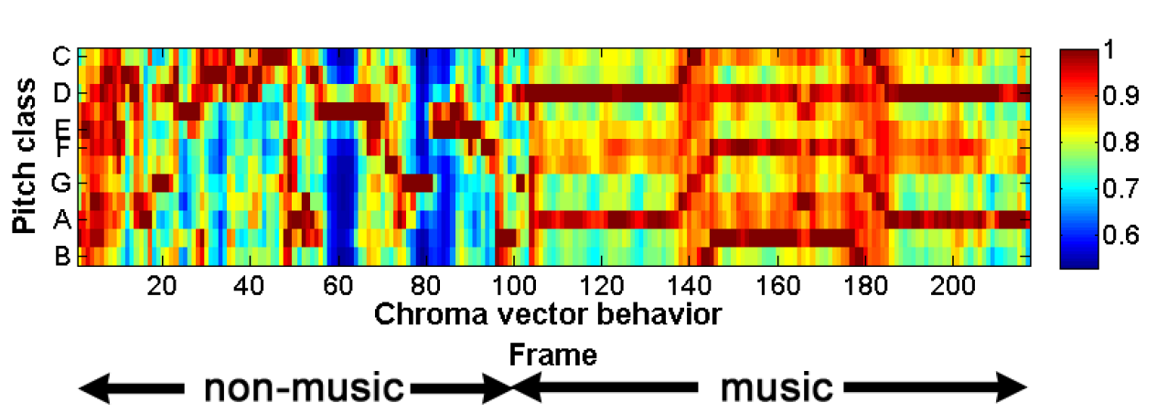Research
Morphing-Based Reharmonization with VAE: Reducing Dissonance with Consonance-Based Loss Function
 This study proposes a model to reduce dissonant chords in morphing-based reharmonization using a variational autoencoder (VAE).
The conventional morphing of chords generates dissonance because the generated results are supplemented by the surrounding learning data in the latent space without considering consonance. Therefore, this study focuses on degrees of dissonance that can be calculated from pitch intervals. We define an ideal consonance degree based on the dissonance degree, and we implement a dissonance penalty as a simple network structure by adding nodes to the VAE so that a co-occurrence vector of pitch interval computed from each chord tone approaches the ideal consonance degree.
Our objective evaluation demonstrates that the number of standard triads increased compared to the conventional VAE morphing method when the model was used.
In addition, the number of non-standard and dissonant chords decreased through our model.
This study proposes a model to reduce dissonant chords in morphing-based reharmonization using a variational autoencoder (VAE).
The conventional morphing of chords generates dissonance because the generated results are supplemented by the surrounding learning data in the latent space without considering consonance. Therefore, this study focuses on degrees of dissonance that can be calculated from pitch intervals. We define an ideal consonance degree based on the dissonance degree, and we implement a dissonance penalty as a simple network structure by adding nodes to the VAE so that a co-occurrence vector of pitch interval computed from each chord tone approaches the ideal consonance degree.
Our objective evaluation demonstrates that the number of standard triads increased compared to the conventional VAE morphing method when the model was used.
In addition, the number of non-standard and dissonant chords decreased through our model.
Music Part Detection in Music Television Program on Chroma Vector Analysis

 We propose a music part detection method incorporating chroma vector analysis for use
with music TV programs. Results show that envelopes of chroma components of music signals tend
to have horizontal (i.e. temporal) correlation in time-frequency representation because music
signals have a periodic chord sequences. Based on this fact, we analyze time series of chroma
components and attempt to segment music parts in music TV programs from other parts.
We propose a music part detection method incorporating chroma vector analysis for use
with music TV programs. Results show that envelopes of chroma components of music signals tend
to have horizontal (i.e. temporal) correlation in time-frequency representation because music
signals have a periodic chord sequences. Based on this fact, we analyze time series of chroma
components and attempt to segment music parts in music TV programs from other parts.
Effects of Audio Compression on Chord Recognition
We specifically examine audio compression effect on the chroma vector, which is a commonly used feature vector for music signal processing. We analyze sound qualities extracted from encoded music files with different bit rates and compare them with the chroma features of original songs obtained using datasets for chord recognition. The compression ratio influences the sound quality between compressed and original songs, but low bit rate compression does not strongly affect the chord recognition accuracy.